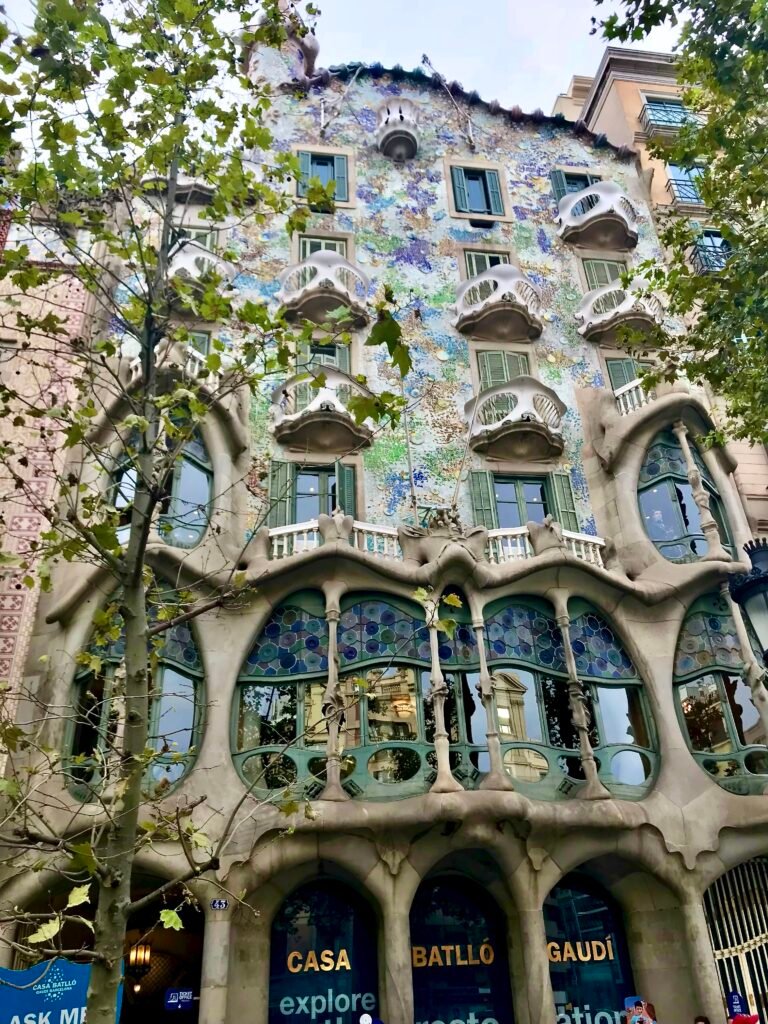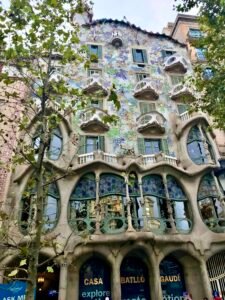What if you could walk through a fanciful building and feel it move with you?
Or, run your hand along a banister and feel the bones of a legend?
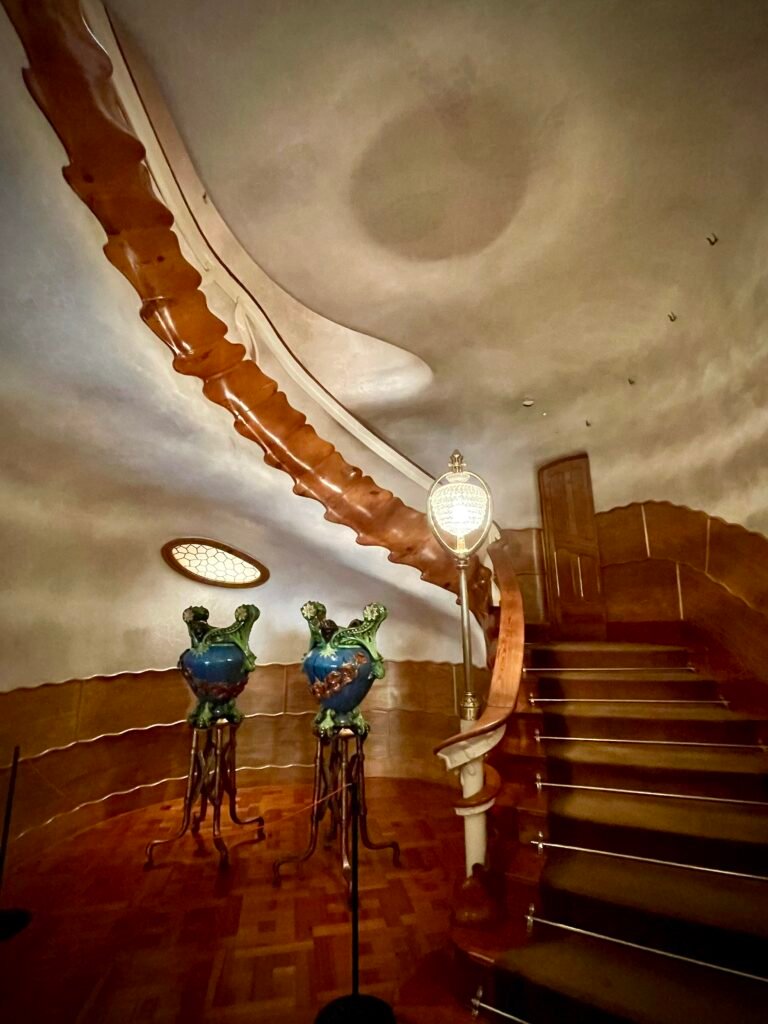
In the heart of Passeig de Gràcia, one of Barcelona’s most elegant boulevards, the fanciful residence of Gaudí’s Casa Batlló stands not as a famous monument to architecture, but as a living, dreaming soul. For slow travelers — those of us who believe in depth over speed — this is more than just a stop. It’s a quiet, mind-opening experience that whispers Catalonia’s modernism story through color, curve, and light.
We speak from experience. As an adopted Catalan family who has lived in Catalonia for over five years, speaks three languages, and breathes in every nuance of this culture, we return to Casa Batlló time and again. Not just because it’s beautiful. But because it reminds us how to feel wonder.
And on one visit, we discovered something that touched us even more deeply: many of the staff at Casa Batlló are on the autism spectrum, just like our adult son. As a family, that moment was profoundly meaningful. It showed us that inclusivity and creativity can coexist — and that Gaudí’s home continues to be a place where everyone belongs.
So who built this wild thing?
Architect, Antoni Gaudí. Maybe you’ve heard of him — the genius behind the Sagrada Família. But before he was building basilicas, he was creating masterpieces, like this.
Casa Batlló wasn’t built from scratch. Gaudí actually transformed an existing building, in the heart of Barcelona, for the Batlló family — textile industrialists who gave him complete freedom. And what he created was less of a renovation… and more of a fanciful re-imagination of what a house could feel like.
The building tells a story — the Catalan legend of Sant Jordi, or Saint George. The balconies on the façade? They’re the skulls of the dragon’s victims. The central staircase stretching from the first floor? A vertebrae, like you’re walking through the beast. The rooftop? That’s the shape of the dragon’s back, and the turret — Gaudí’s famous cross — that’s the sword that slays the creature. a symbolic nod to Sant Jordi, the dragon-slaying patron saint of Catalonia. You are seeing not just a static building but, living architecture!
But here’s the thing — he never said that outright. He let the building speak for itself.
That’s very Catalan, by the way. Understated but symbolic. Fiercely imaginative. Always tied to history, legend, and identity.
Why This Place Matters
More than a residential building, Antoni Gaudí’s Casa Batlló is an emotional journey. Built by the brilliant Antoni Gaudí between 1904 and 1906, this home-turned-museum is one of the finest examples of Catalan Modernism, a movement that championed nature, imagination, and Catalonia’s cultural identity.
It’s façade looks like a ceramic mosaic of scales. Think Monet’s, “Water Lillies” a la Salvador Dali. Interior walls and even furnishings resemble ocean waves and the play of light on each roll of the tide. The upper balcony, with it’s tulip shapes and movement further reinforces Gaudi’s connection and awe of God’s natural creation. — Every detail in Casa Batlló has meaning, and every inch is designed to stir emotion.
Most Barcelona visitors snap a photo and move on. But if you linger, Casa Batlló opens its heart to you.
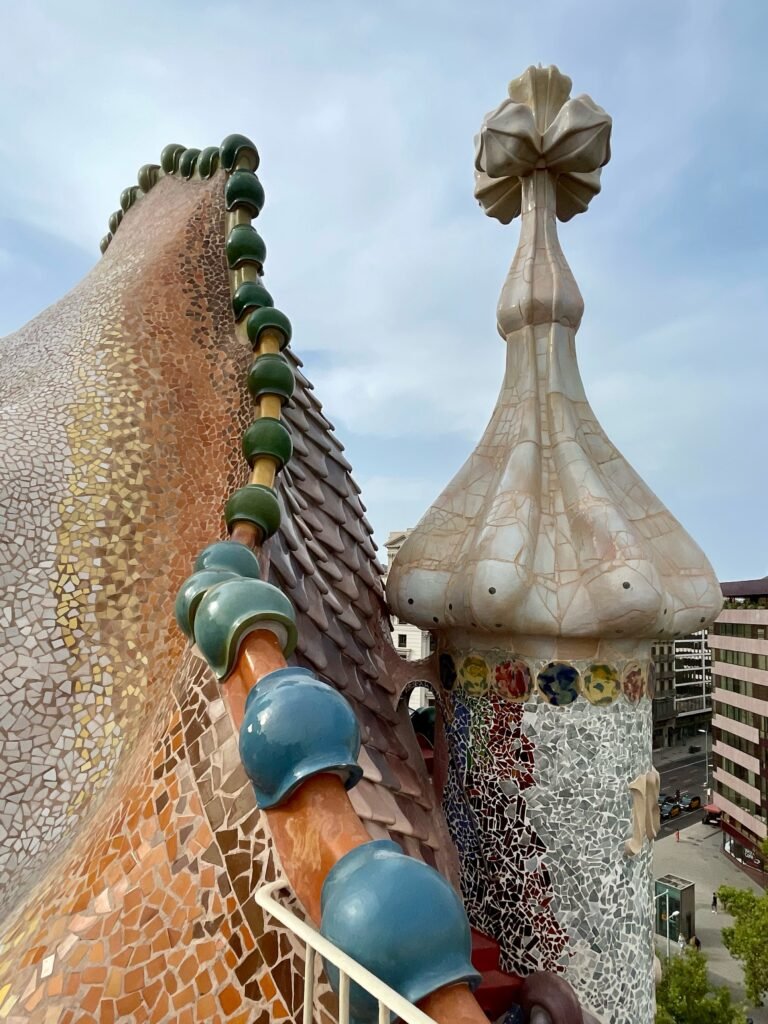
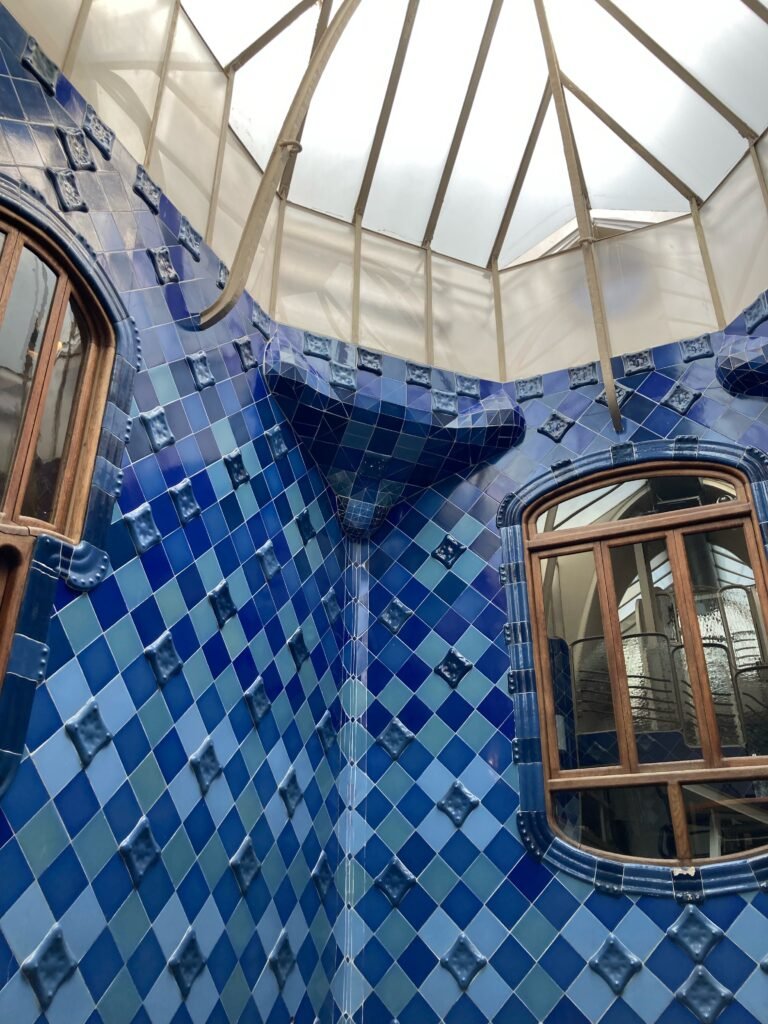
A Magical Evening on the Rooftop
If you’re visiting in summer, don’t rush off after your tour. Instead, step into one of Barcelona’s most enchanting secrets — Nits Màgiques, the magical summer concerts held on Casa Batlló’s rooftop.
The moment the sun begins to slip behind the tiled spine of the dragon, the rooftop transforms. You hear the soft clink of glasses as cava is poured — light, bubbly, cool against your fingertips. A hush falls as the first notes of music float into the evening air. Flamenco guitar, soft jazz, or the soulful hum of a Catalan ballad — the style changes nightly, but the feeling is always the same: you’ve stumbled into something unexpected, something deeply romantic.
The air smells faintly of jasmine and warm stone. Lanterns flicker. A breeze rises from the city below, carrying with it the hum of distant voices and the clatter of evening tapas. You’re surrounded by Gaudí’s fantastical chimneys, now glowing like sculptures in the moonlight. The city feels far away — and yet, you’re right in the heart of it.
This is more than a concert. It’s an escape.
A chance to drift away, to let beauty and music and night wrap around you like the warm scent of baking bread. To feel part of something intimate, local, unforgettable.
So linger. Sip slowly. Listen deeply.
Because here, on this rooftop where dragons sleep and music wakes the sky, Casa Batlló becomes more than a work of art — it becomes a living memory.
Laser Light Nights at Casa Batlló: A Mind-Bending Celebration of Art and Innovation
As if Casa Batlló weren’t already a feast for the senses, throughout the year this iconic house of imagination takes things even further — hosting awe-inspiring laser light shows that transform the building into a living canvas of color, movement, and sound.
These aren’t your average projections. Using the latest in laser technology, artists and designers collaborate to create mind-bending displays that wrap the building in stories made of light. The façade pulses and shifts, Gaudí’s curves ripple with color, and animated laser artwork dances across the dragon’s back — all in perfect sync with music that lifts the energy of the entire boulevard.
Joyful crowds gather along Passeig de Gràcia, their faces lit with the glow of shifting hues and wonder. Locals and visitors alike pause, smile, and soak in the spectacle. It’s playful, immersive, and unforgettable — whether you planned your night around it or stumbled upon it by beautiful accident.
For couples, it’s a great way to end a date — standing hand in hand beneath the stars as light swirls above you. For families, it’s pure memory-making magic — a moment your kids will talk about long after you’ve left Barcelona.
In a city known for its artistic soul, these nighttime events are proof that Casa Batlló continues to evolve — blending Gaudí’s timeless vision with the cutting edge of digital art.
Because here, innovation doesn’t replace beauty.
It reveals it in new, spectacular ways.
What You’ll Feel (If You Let Yourself)
Wander into the noble floors and you’re enveloped in natural light, stained glass, and undulating lines that make the walls feel like waves. The attic — one of our favorite corners — is a series of white arches that feel like a whale’s ribcage. It’s both peaceful and surreal. Upstairs, the rooftop is where the “dragon” sleeps, tiles made of a myriad of different colors and styles, sparkling like fire under the Mediterranean sun.
One of our most cherished memories? Sitting in silence by the central lightwell, watching the blue tiles darken as they rise — Gaudí’s trick to ensure light and balance on every floor. It’s a detail you’ll miss if you rush. But if you pause, it’s pure poetry.
Practical Tips for Slow Traveler
Location:
Passeig de Gràcia, 43 — Eixample District, Barcelona. A stunning street full of luxury shops, Modernist buildings, and cafés perfect for people-watching.
Best Time to Visit:
Early morning or around sunset (that golden hour) for fewer crowds and softer light. We especially love going in spring when the city trees starts to bloom and Gaudí’s designs seem to come alive in color.
Tickets:
Book online in advance. The Blue Ticket (basic self-guided visit) starts around €35, but we highly recommend the Gold or Be The First experiences for early access and richer immersion.
Unique Experiences:
• Night-time visits with live music on the rooftop during summer months — magical.
• Immersive augmented reality guide that adds a dreamlike layer to what you’re seeing.
• A new “Gaudí Cube” room, an audiovisual space that draws you deeper into his famous imagination.
Local Tips and Hidden Gems
• Don’t rush to your next site. Walk to nearby Passeig de Sant Joan and enjoy a quiet coffee or fresh-squeezed juice at Faborit. Or grab a chocolate croissant (xocolata) from Pastisseria Escribà.
• Stay in the area. Boutique hotels like Hotel Praktik Bakery; the only hotel in the world with its own bakery. Or, Casa Bonay with its rooftop cabin spa treatments, easy walkability and modern, relaxing design.
• Public transport: Easy access via Metro L2, L3, L4 (Passeig de Gràcia station). Or simply walk — the Eixample neighborhood is made for wandering.
• Food tip: After your visit, treat yourself to a slow lunch at El Nacional, a gorgeous food hall nearby where you can taste old and new Catalan classics like Arroz negro de pescado (Fish and seafood black rice-made with squid ink) at La Llotja or botifarra amb mongetes (Catalan sausage with beans).
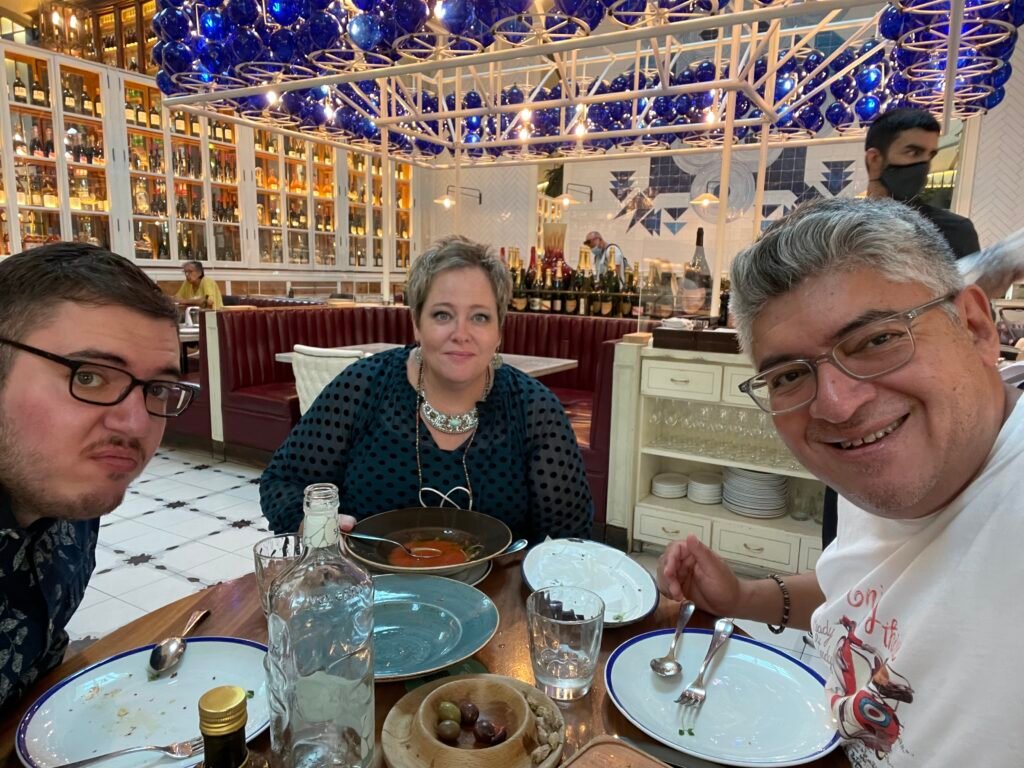
Let the City Breathe Through You
Barcelona is a city made for slow travel — for getting lost in alleyways, sipping wine in the golden hour, and sitting still long enough to hear the stories the buildings tell.
Casa Batlló is one of those places that helps you recapture the wonder of the world around you. It invites you to rest, to imagine, and to connect — not just with art, but with yourself.
And for our family — a family that cherishes culture, embraces Catalan life, and walks the journey of neurodiversity — it has become more than a destination. It’s a reminder that beauty, belonging, and imagination can live together in harmony.
Let Casa Batlló be your first step toward a deeper, slower Barcelona.

